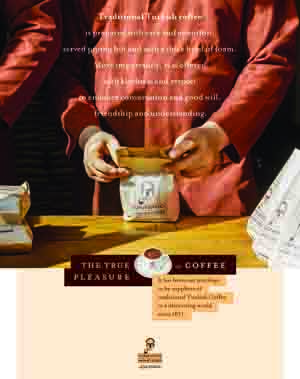On Thursday, April 20, I attended another concert at the Zorlu Center in Zincirlikuyu; this time, the works being performed were La tragédie de Salomé by the French composer Florent Schmitt, and Anton Bruckner’s Fourth Symphony, the ‘Romantic’. The orchestra was once again the Borusan Istanbul Philharmonic, and on this occasion they were conducted by Patrick Hahn, their regular maestro.
The evening’s proceedings began with a pleasant surprise – a programme change that I very much appreciated. The concert as advertised was to begin with some songs by Alban Berg and Richard Strauss, with the operatic coloratura soprano Marlis Petersen as soloist. Instead, it began with Florent Schmitt’s La tragédie de Salomé (which had been on the menu for the second half), and continued with an unscheduled work: Bruckner’s Fourth Symphony. I describe the change as ‘a pleasant surprise’ because I personally find the works by Alban Berg and Richard Strauss that were on the original programme cloying – rather like having nothing but rich fruit cake for breakfast, dinner and tea. (I say this without in any way compromising the admiration I feel for Berg by reason of his Violin Concerto, or my adulation of Richard Strauss for the originality of his Also Sprach Zarathustra.) A Bruckner symphony, however, is always welcome, providing one has sufficient time to take it in: one is assured of a fulsome, satisfying repast.
My reason for attending this concert was actually my curiosity with regard to La tragédie de Salomé by Florent Schmitt (1870–1958), a little-known French composer who happens to tick quite a few of my personal boxes. At the Paris Conservatoire, he was a pupil of Gabriel Fauré (a composer I admire for his chansons) and Jules Massenet. In the 1890s he became friendly with Frederick Delius – another of my culture heroes – and prepared vocal scores for four of his operas. Then, in 1900, he won the much-coveted Prix de Rome. There were darker sides to Monsieur Schmitt, however: as a music critic for Le Temps from 1929 to 1939, he was known to shout out his views from his seat in the hall. In 1933, at a concert that included music by yet another of my favourite composers, Kurt Weill, who had just been forced to leave Germany and was present that day, Schmitt is said to have led a group in shouting “Vive Hitler!”. But then, the story of Salomé and her flirtation with the severed head of John the Baptist (as depicted in Oscar Wilde’s notorious play, which formed the basis of Richard Strauss’s 1905 opera Salomé) is darkness itself – hardly a tale that Enid Blyton might have told in her accounts of Noddy and Big Ears’ meanderings around Toyland.
La tragédie de Salomé started life in 1907 as a ballet score, but was revised in 1910 as a suite based on five of the ballet’s movements – and it was, in fact, the suite that we heard from the Borusan Istanbul Philharmonic. Wikipedia has this to say about the composer and the work:
He was part of the group known as ‘Les Apaches’. His own style, recognisably impressionistic, owed something to the example of Debussy, though it had distinct traces of Wagner and Richard Strauss also. ... The rhythmic syncopations, polyrhythms, percussively-treated chords, bitonality and scoring of Schmitt’s work anticipate Stravinsky’s The Rite of Spring. While composing The Rite of Spring, Stravinsky acknowledged that Schmitt’s ballet gave him greater joy than any work he had heard in a long time.
To say that Schmitt’s style ‘owed something to the example of Debussy’ is in my view an understatement: I noticed passages in La tragédie de Salomé – especially in the third movement, 'Les Enchantements sur la mer' – that seemed to have been cribbed directly from La mer and Prélude à l’Après-midi d’un faune. In the final movement, 'Danse de l’effroi' (‘Dance of Terror’), however, Schmitt is considerably more unbuttoned than Debussy ever was.
Here is a performance by the Orchestre Philharmonique de Radio France, conducted by Marek Janowski, together with a piano reduction of the score. The programme notes (available on YouTube) are very informative, especially on the subject of the influence the first version of Schmitt’s work may have had on Stravinsky:
The Borusan Istanbul Philharmonic Orchestra gave a very competent performance, managing the changes of tempo without any hitches whatever. (Some of the credit for this must, of course, go to Patrick Hahn, their youthful Austrian conductor.)
The second half of the concert, Bruckner’s Fourth Symphony, the ‘Romantic’, was written in 1874 and premiered in 1881, revised several times by the composer. Wikipedia gives us the following anecdote:
Once, after a rehearsal of his Fourth Symphony in 1881, the well-meaning Bruckner tipped the conductor Hans Richter: “When the symphony was over,” Richter related, “Bruckner came to me, his face beaming with enthusiasm and joy. I felt him press a coin into my hand. ‘Take this,’ he said, ‘and drink a glass of beer to my health.’” Richter, of course, accepted the coin, a Maria Theresa thaler, and wore it on his watch-chain ever after.
Anton Bruckner (1824–96) was a rare combination of country bumpkin – witness that ‘Have a beer on me’ gesture – and sublime genius. It is a source of amazement to me that there are those who do not find his symphonies appealing, or even comprehensible. The Fourth Symphony was in fact the first of his orchestral works to gain popular approval. His previous offering, the Third Symphony, had had a disastrous first performance: the audience gradually left the hall as the music played, and at the end the orchestra, too, fled, leaving Bruckner alone with a few supporters – including his friend Gustav Mahler. For my money, this symphony’s thrilling third movement (the scherzo) is undeniably a masterpiece: every repetition of the main theme sounds fresh and new. Maybe it was the sharp contrasts between the movement’s various sections that the audience in Vienna in 1877 could not stomach. To the modern listener, of course, sudden, stark contrasts are all in a day’s post-modernism. In the following recording of the Third Symphony by the Berliner Philharmoniker, conducted by Herbert von Karajan, this movement starts at 38:33:
Richard Wagner was a fan of this work, and he famously said: “I know of only one composer who measures up to Beethoven, and that is Bruckner.” Johannes Brahms, by contrast, somewhat ungenerously compared Bruckner’s long, unhurried late works to ‘symphonic boa-constrictors’. Whatever the reader’s verdict may be, I for one am quite happy to snuggle down in the boa-constrictor’s coils. Here are the Wikipedia entries for (firstly) Anton Bruckner himself and (secondly) his Fourth Symphony. I advise skipping the ‘Versions’ part of the symphony entry unless you are still wide awake at four in the morning and desperate for something to despatch you into unconsciousness – perhaps a draught from the river Lethe, or (failing anything else) a blow on the head from a sock full of sand.
Finally, here is a rather more approachable account of the work from the ‘Houston Symphony’ website (unfortunately, the author is unnamed).
The recording of Bruckner’s Fourth Symphony that I have chosen to list is by the Münchner Philharmoniker under the baton of Sergiu Celibidache. The approach to conducting adopted by this Romanian conductor is a Taoist one – he seems to have fully absorbed the lesson of non-action. The rewards of his minimalism are, however, formidable:
In my humble opinion, the Borusan Istanbul Philharmonic excelled themselves in their performance of this symphony at the Zorlu Center. The horns appeared to have made a complete recovery from their temporary lapse in Beethoven’s Sixth (see my review of the concert on 13th April), and on this occasion played with faultless accuracy. In fact, the whole of the brass section were on fine form. (They needed to be – Bruckner tends to lean on the brass to such an extent that the instrumentalists’ lips must need a generous helping of salve after each performance.) The woodwind entries were clean, and the sumptuously reverberating cello tone in the slow movement such a treat that I was tempted to allow myself to sink into blissful, sybaritic slumber. But owing, perhaps, to my strict Methodist upbringing I restrained myself, and stayed awake for the finale.
The standard the Borusan Istanbul Philharmonic and maestro Patrick Hahn have set for themselves is a high one. I look forward to hearing them (God willing) on many future occasions. The auditorium for this concert was half-empty, however – thanks in part, no doubt, to the inclement weather – and I hereby appeal to readers of these august pages to be present when any further libations of mellifluousness are poured out by this orchestra for our edification and enjoyment.







